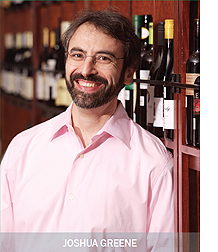

By the time I left Calliope, the room had begun to quiet down. My friends wandered out the café doors to East 4th Street, once the breeding ground of Hell’s Angels, now the home of a French bistro. Turning around, I asked a waiter near the door for a copy of the wine list to take with me. He crossed the room to consult with someone sitting at the bar, then returned with the small, textured folder, six narrow pages of French wine layered inside.
What does it mean to be a French restaurant in New York in 2013? That your list is short and your spirit generous enough to give it away without asking a lot of questions. That the food is transformed by the chefs in a way that doesn’t feel contrived, and that the wine is as satisfying as the food. Calliope’s list relates to the countryside of France the way the rabbit in the pappardelle connects to a farm in New York’s Hudson Valley. As far away as Boulud Sud may seem, on its Upper West Side-Lincoln Center beachfront property, its spirit is parallel to Calliope’s–with a wine list connected to the coastal hills of the Mediterranean. These collections are not about brands or famous place names; they are lists that manage to be primal, a natural extension of the restaurant’s ethos.
Alice Water’s team at Chez Panisse got it years ago when they established their house wine as zinfandel, from Green & Red’s north-facing vineyards in Pope Valley. That wine has nothing to do with the caricature zin has come to represent in California; this is what Jonathan Waters calls “a quiet wine,” zinfandel without the flash or the brass, just a country red grown in the remote Napa Valley hills. And it’s one of the restaurant’s best sellers.
That primal aspect of wine, the connection to the wind and the dirt, is what fascinated Patrick Comiskey about the pinot noirs coming from the Eola Hills in Oregon. It’s what compels the sommeliers who spoke to Alberto Taddei about the wines that excite them most in Chianti today, and what inspired Alan Tardi to travel to Lunigiana, a little-known region where Tuscany and Liguria collide.
You might find some of the wines in the results of our Annual Restaurant Poll–and on the lists of our New & Notable Restaurants in New York–a bit esoteric. Perhaps some of them are. There are plenty of lists filled with unknown wines, reflecting a sommelier’s intention to show off some esoteric knowledge. What’s striking is how many new lists use wine to connect more directly with the food, as much in taste as in a primal sense of place.


This story appears in the print issue of April 2013.
Like what you read? Subscribe today.















